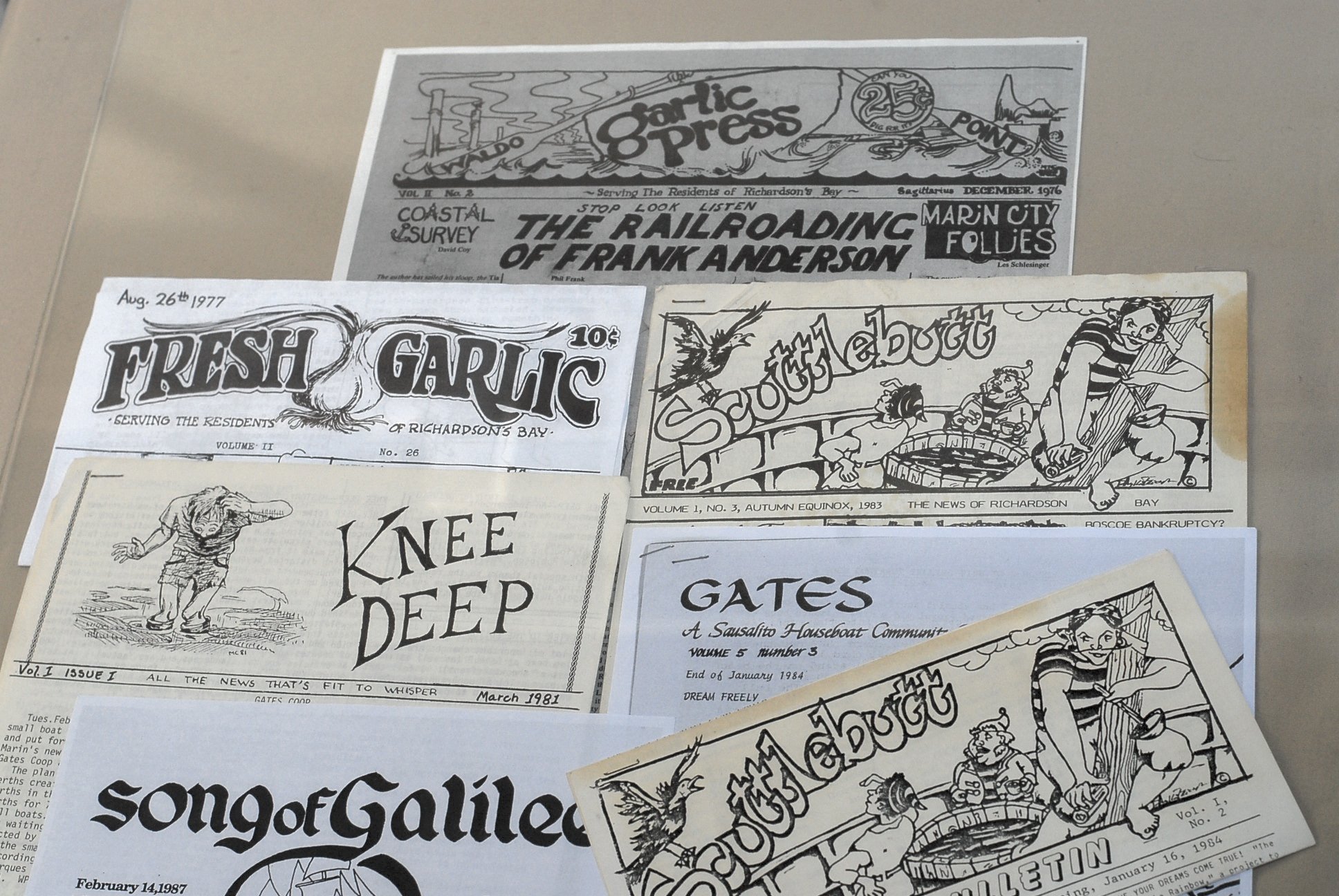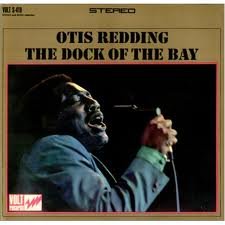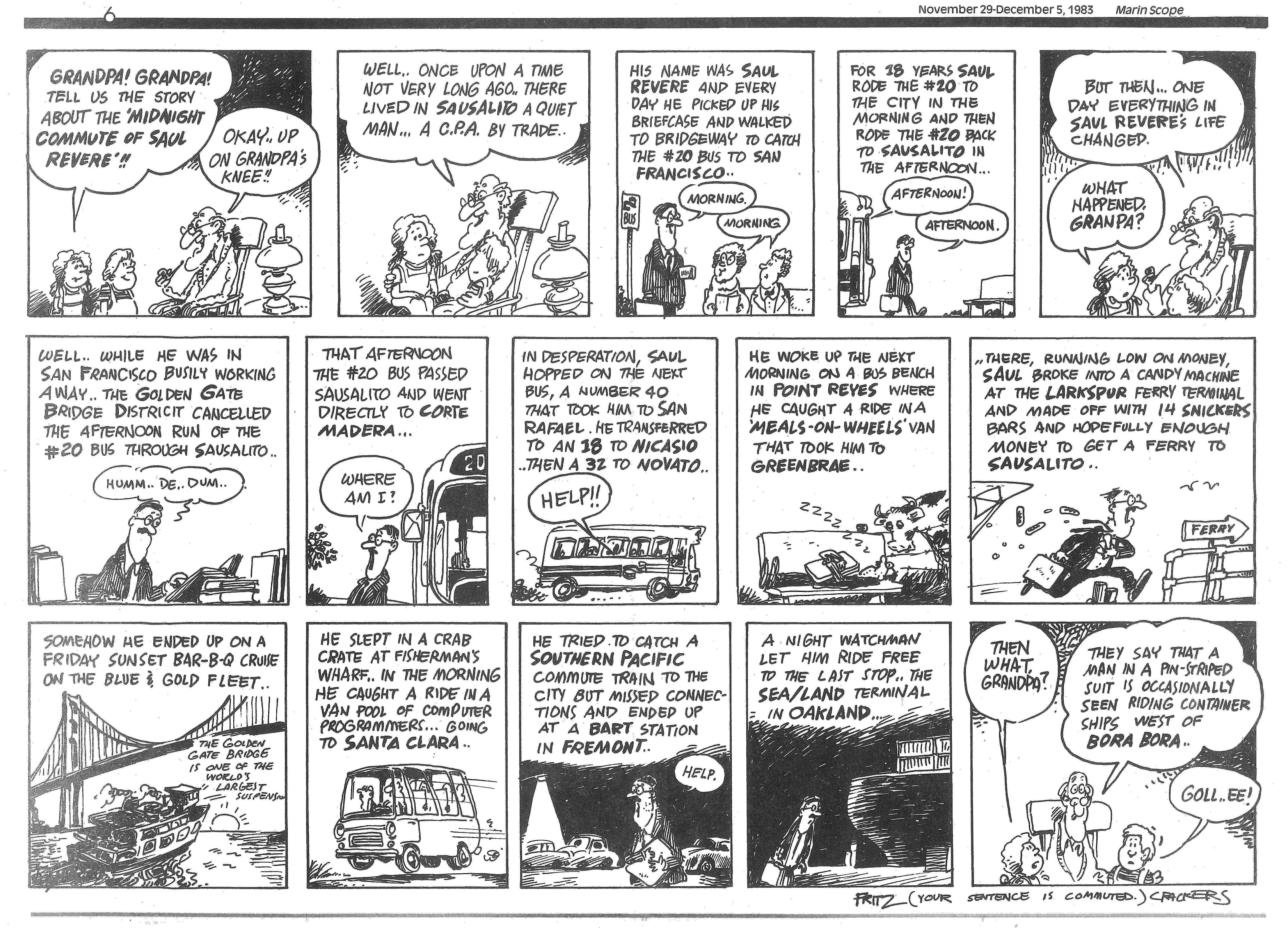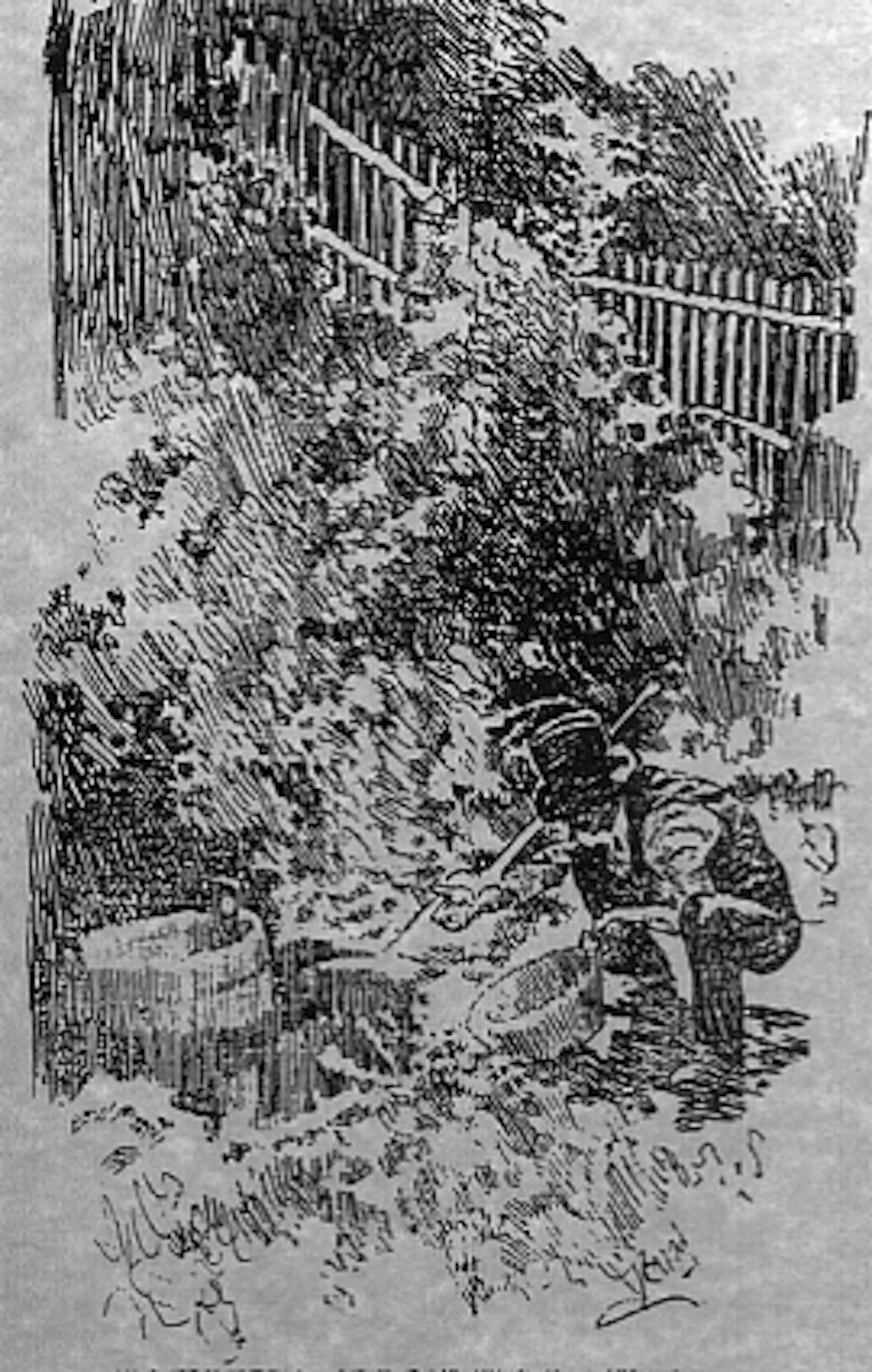Waterfront News: Part II … Fighting City Hall
 Wednesday, November 30, 2011 at 11:51PM
Wednesday, November 30, 2011 at 11:51PM By Steefenie Wicks
The talents of the writers for the waterfront papers were rich and strong with the belief that rumors on the waterfront were more dangerous than the speculation of what was being written and who was writing it.
In 1976 the “Waldo Point Garlic Press” was published on the waterfront and sold for 25 cents a copy. The front cover of an issue published in December, 1976, has Phil Frank writing about the “Railroading of Frank Anderson,” who owned a nursery in town. Frank Anderson had been part of Sausalito since the 1920’s and was known and loved by many of the residents in town and on the waterfront. He was an outspoken figure who soon became a political cause as he faced off with the City over his property rights and faced eviction. Phil Frank took up his cause and the front page of the Garlic Press Vol II issue no. 2, published in December of 1976 took on the town. Phil wrote:
The Railroading Of Frank Anderson …..
“It would probably make a good situation comedy for prime time TV viewers … an irascible old timer in a small town with a flair for the absurd, sets himself up in a nursery business that also dabbles in firewood, coal, railroad ties, pots plants and Victorian house parts. Suddenly, the real estate that he occupies becomes prime commercial development property as the little town goes BIG. Ensuing episodes show the old nurseryman up against the Southern Pacific Railroad, local commercial developers, city council and the county sheriff. Sort of a ‘Walton’s’, ‘Beverly Hillbillies’, and ‘Ma & Pa Kettle’ in which the small town folks battle for their livelihoods and lives against, ‘PROGRESS.’
“For it was Frank Anderson who in the 1960’s sounded the alarm, ‘THE DEVELOPERS ARE COMING!’ as he watched his much loved downtown Sausalito fall store by store to the purveyors of jewelry, fashions, tourist gee-gaws and fast food services. He watched the entire City oriented services disappear just because someone wanted to make a fast buck.
“He watched them drop, month by month … the florist, the barber, the cleaners, the Western Union, the music store, two groceries, the upholsterer, the shoe repair, the butcher, baker, laundry then the auto garage, the cigar store, the theater, the Porthole and the variety store. He watched all of these City oriented services disappear just because someone wanted to make a fast buck.
“A perennial thorn in the City Council’s side, Frank Anderson has, by means of an ever-watchful eye and an unflagging criticism, fought the Carmel-ization of Sausalito.”
It was apparent as shown in Phil Frank’s article, that the waterfront newspapers became the forum for articles that spoke to the communities not only on the waterfront but up on the hill. This form of communication played an important part in helping to organize, not only the waterfront, but also the Sausalito Community. This was a continuation of a movement that was fast turning into a political entity being born on the waterfront.
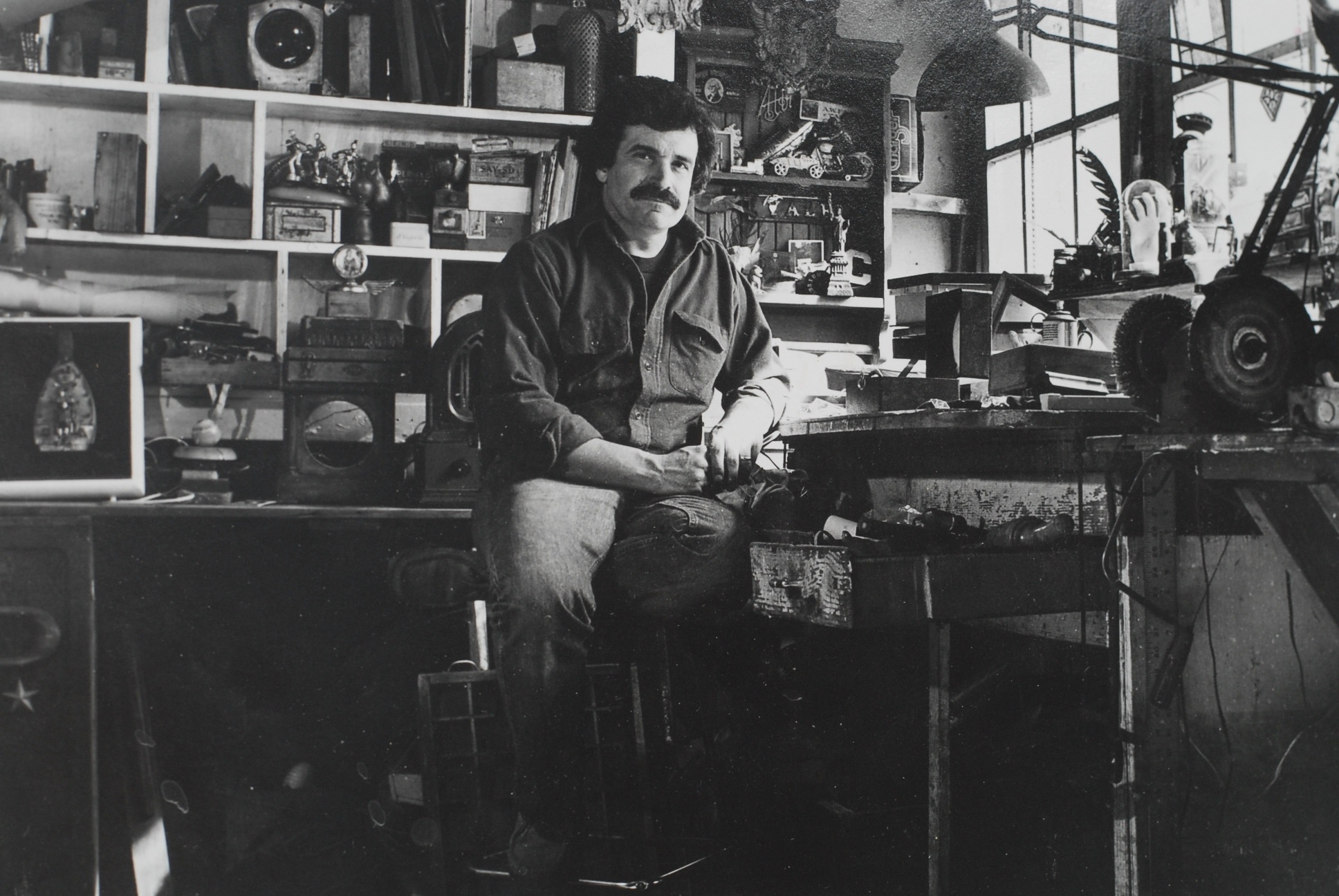
Phil Frank in his studio at Gate 3 in September, 1983.
Photo courtesy of Steefenie Wicks

